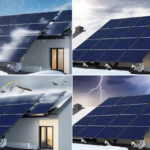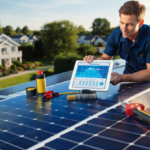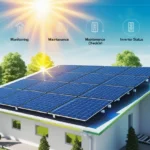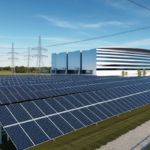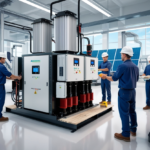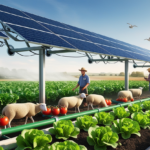If you’re exploring ways to live more sustainably or use land more wisely, agrivoltaics might be the breakthrough you’ve been looking for. At its core, agrivoltaics — also known as dual-use solar — allows crops and solar panels to share the same space. Instead of choosing between farming or clean energy, you get both.
By installing solar panels above agricultural fields, you create a system where plants can thrive under filtered sunlight, while the panels generate electricity from the sun’s rays. This innovation doesn’t just make better use of land — it also brings new revenue streams to farmers and improves the resilience of both the food and energy supply chains.
For you, this means a more secure and sustainable future, where local farms can stay profitable, food remains accessible, and clean energy is generated right where it’s needed most.
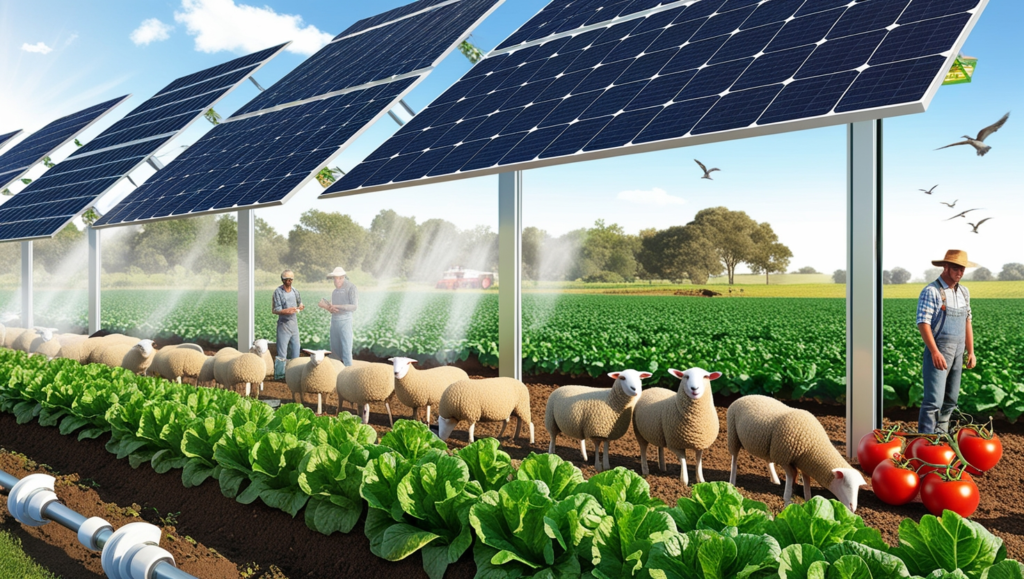
What Is Agrivoltaics?
How Dual-Use Solar Farming Works
Imagine your farmland not only producing fresh vegetables or feeding livestock but also generating clean, renewable electricity at the same time. That’s the power of agrivoltaics, also known as dual-use solar farming. This innovative system lets you place solar panels above active agricultural land — without displacing crops or animals.
Here’s how it benefits you:
- Crops thrive in the partial shade created by elevated solar panels, which can reduce water loss and protect plants from extreme heat.
- Livestock like sheep or goats can graze comfortably under the panels, creating a cooler microclimate and reducing land maintenance costs.
- You generate solar energy right on your property — which means lower electricity bills, potential income from selling power back to the grid, and less reliance on fossil fuels.
Instead of choosing between food and energy, agrivoltaics offers you both — maximizing land use while increasing your profits and sustainability impact. It’s a smart, forward-thinking solution for farmers, landowners, and clean energy advocates alike.
The Benefits of Agrivoltaics for Farmers and Landowners
If you’re managing farmland or rural property, you understand the pressure to make every acre count. Agrivoltaics gives you a powerful way to double your land’s productivity — all while protecting your crops, conserving water, and increasing your bottom line.
🌱 Boost Land Efficiency with Dual Yields
Instead of choosing between agriculture or clean energy, agrivoltaics lets you do both. By growing crops like tomatoes, lettuce, or peppers beneath solar arrays, you can maintain your harvest while generating electricity. Studies show that some crops even perform better in partial shade, protected from heat and sunburn damage.
💧 Conserve Precious Water Resources
Solar panels act like a canopy over your fields, reducing direct sunlight and limiting evaporation. That means your soil stays moist longer — a major advantage in drought-prone regions where every drop counts. You’ll spend less on irrigation and help build resilience against changing climate conditions.
💵 Unlock New Revenue Streams
Agrivoltaics offers income diversification. You can lease portions of your land to solar developers or install your own system and sell excess power back to the grid. Either way, you create a consistent cash flow that supports your farm even during difficult harvests or fluctuating market prices.
🌿 Protect Your Livestock from Extreme Heat
If you raise animals like sheep or goats, agrivoltaics gives them natural shade. Grazing under solar panels keeps them cooler, reduces stress, and can even minimize the need for additional shelter. You maintain healthy livestock while keeping land under control with natural mowing.

Solar Efficiency Boosted by Crops?
🌾 Crops That Cool: A Hidden Advantage of Agrivoltaics
Here’s a surprising benefit you might not expect — your crops can actually help your solar panels work better. When you plant beneath solar arrays, the vegetation helps regulate temperature by releasing moisture into the air and cooling the microclimate. This cooler environment prevents your solar panels from overheating, which can be a real problem in high-temperature areas.
🔋 Why Temperature Matters for Solar Efficiency
Most solar panels operate best at moderate temperatures. When they get too hot, their efficiency drops, meaning less energy for your home or the grid. The natural cooling effect provided by crops helps maintain ideal operating conditions, allowing your panels to produce more power — especially during long, sunny days.
🌿 A True Symbiotic Relationship
It’s a win-win: the panels provide shade and protect crops from harsh weather, while the crops give back by improving the panels’ performance. This two-way benefit makes agrivoltaics one of the most efficient land-use strategies available today, especially if you’re aiming for both food production and clean energy.Here’s something unexpected — the presence of crops can enhance solar panel efficiency. Crops help cool the air below and around the panels, preventing them from overheating. Cooler panels mean better energy output. So, the relationship goes both ways: panels protect crops, and crops keep panels performing well.
Technological Innovation in Agrivoltaics
Agrivoltaic systems are evolving quickly thanks to innovations like:
- Elevated solar panel structures that allow for tractor access and tall crops
- Adjustable-angle panels that rotate to optimize both sunlight for crops and energy production
- Smart irrigation systems powered by solar
These upgrades make it easier for you to integrate solar into existing farm operations with minimal disruption.
Environmental Impact and Sustainability
Agrivoltaics isn’t just good for business — it’s a huge win for the planet:
- Reduces carbon footprint by replacing fossil fuels with clean energy
- Preserves open space by avoiding land-use competition between solar and farming
- Improves biodiversity when combined with native plantings and pollinator-friendly crops
If sustainability matters to you, agrivoltaics lets you walk the talk on climate action while reaping real-world benefits.
Where Is Agrivoltaics Gaining Ground?
This dual-use approach is already gaining traction in states like:
- Arizona and California, where farmers use agrivoltaics to combat drought
- Massachusetts, with state incentives for dual-use solar farms
- Oregon and Colorado, exploring large-scale agrivoltaic installations
Globally, countries like Japan, France, and India are also investing heavily in this model.
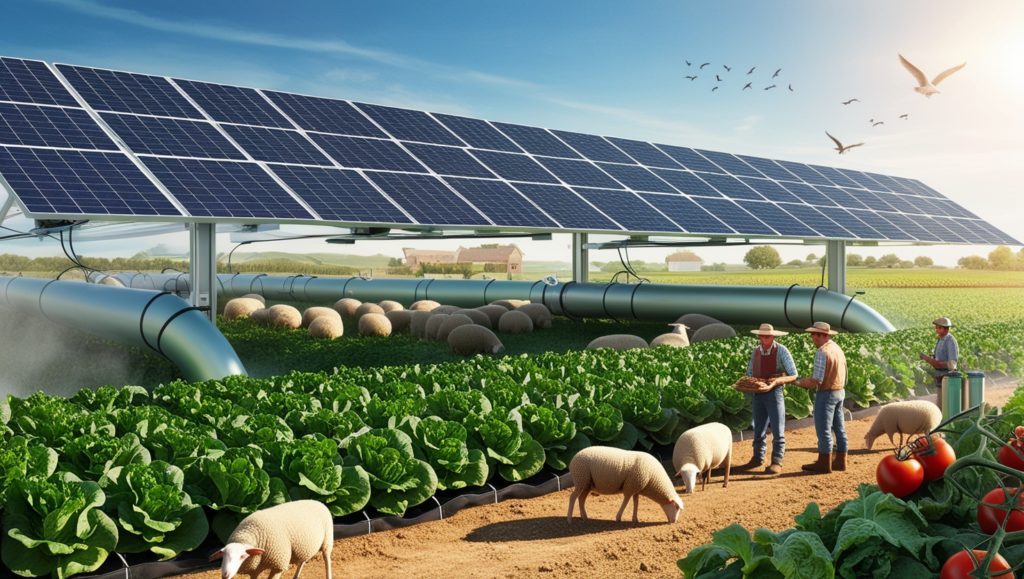
How to Get Started with Agrivoltaics
Ready to explore agrivoltaics on your land? Here’s how you can begin:
- Assess your land: Check sun exposure, crop compatibility, and topography.
- Partner with solar developers: Some companies specialize in agrivoltaic projects and offer flexible agreements.
- Explore funding and incentives: Look into USDA grants or state-specific solar/agriculture incentives.
- Start small: A pilot project on part of your land can help you learn the ropes before scaling up.
Final Thoughts: The Future of Food and Energy is Shared
Agrivoltaics is more than just a buzzword — it’s a powerful shift in how you can grow food and produce clean energy in tandem. As solar adoption rises and the need for sustainable farming grows, this integrated approach could play a vital role in securing a greener, more resilient future for all.
Want to see how agrivoltaics could work on your land or in your community? Reach out to a local solar expert or agricultural extension service today and start planning your dual-use energy future!


